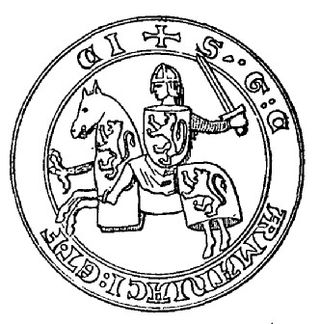

The following is a list of rulers of the County of Armagnac :


The following is a list of rulers of the County of Armagnac :
The Capetian dynasty, also known as the "House of France", is a dynasty of European origin, and a branch of the Robertians and the Karlings. It is among the largest and oldest royal houses in Europe and the world, and consists of Hugh Capet, the founder of the dynasty, and his male-line descendants, who ruled in France without interruption from 987 to 1792, and again from 1814 to 1848. The senior line ruled in France as the House of Capet from the election of Hugh Capet in 987 until the death of Charles IV in 1328. That line was succeeded by cadet branches, the Houses of Valois and then Bourbon, which ruled without interruption until the French Revolution abolished the monarchy in 1792. The Bourbons were restored in 1814 in the aftermath of Napoleon's defeat, but had to vacate the throne again in 1830 in favour of the last Capetian monarch of France, Louis Philippe I, who belonged to the House of Orléans. Cadet branches of the Capetian House of Bourbon are still reigning over Spain and Luxembourg.
The County of Armagnac, situated between the Adour and Garonne rivers in the lower foothills of the Pyrenées, was a historic county of the Duchy of Gascony, established in 601 in Aquitaine. In 960, the title of 'Count of Armagnac' was established, and thus the County of Armagnac was created. In 1751, following the death of childless Charles de Lorraine, Comte d'Armagnac, the county was absorbed into the Crown lands of France and the King, then Louis XV took the title of 'Count of Armagnac'. In 1791, following the decree dividing France into departments, the county was disestablished, but remains an important natural region of France.

Bernard VII, Count of Armagnac was Count of Armagnac and Constable of France. He was the son of John II, Count of Armagnac, and Jeanne de Périgord. He succeeded in Armagnac at the death of his brother, John III, in 1391. After prolonged fighting, he also became Count of Comminges in 1412.

The Constable of France was lieutenant to the King of France, the first of the original five Great Officers of the Crown and the commander-in-chief of the Royal Army. He was, at least on paper, the highest-ranking member of the French nobility.
Gerald I Trancaleon was the Count of Armagnac from 995 until his death. He was the son and successor of Bernard I.
The County of Fézensac was an 8th-century creation on the north-eastern fringes of the Duchy of Gascony following Charlemagne's policy of feudalisation and Frankish colonisation. The move was aimed at offsetting and undermining the authority of the duke of Gascony Lupo II after the setback suffered by the Franks at the Battle of Roncevaux in 778 and failure to restrain the Basques. That advance clearly displeased the Basques, with these policies sparking a stir on the banks of the Garonne.
The table of years in art is a tabular display of all years in art, for overview and quick navigation to any year.
John of Armagnac may refer to:
John II, the Hunchback,, Count of Armagnac, of Fézensac, Rodez (1371–1384) and Count of Charolais (1364–1384), Viscount Lomagne and Auvillars, he was the son of John I, Count of Armagnac, of Fezensac and Rodez, Viscount Lomagne and Auvillars and Beatrix de Clermont, great-granddaughter of Louis IX of France.

Gerald VI, (1235–1285), was Viscount Fezensaguet from 1240 to 1285, then Count of Armagnac and Fézensac from 1256 to 1285. He was the son of Roger d'Armagnac, Viscount of Fezensaguet, and Pincelle d'Albret.

Bernard VI,, Count of Armagnac and Fezensac, was the son of Gerald VI, Count of Armagnac, and Mathe de Béarn.
Gerald V d'Armagnac, Count of Armagnac and Fézensac from 1215 to 1219, was the son of Bernard d'Armagnac, Viscount of Fézensaguet and Geralda of Foix.
Bernard d'Armagnac (1155–1202) was Lord of Firmacon then Viscount of Fezensaguet from 1182 to 1202. He was the son of Gerald, Count of Armagnac.

The title Count of Vaudémont was granted to Gérard 1st of Vaudémont in 1070, after he supported the succession of his brother, Theodoric II, Duke of Lorraine to the Duchy of Lorraine. Counts of Vaudémont served as vassals of the Dukes of Lorraine. After 1473 the title was held by the Duke of Lorraine and was bestowed on younger sons of the Duke. It was later restyled "Prince of Vaudémont".